The Alcazaba, or fortified citadel, at Almeria is the second largest Alcazaba in the Iberian Peninsula, the largest being at Badajoz in Extremadura.
By Nick Nutter | Updated 12 Dec 2022 | Almería | Places To Go |
Login to add to YOUR Favourites or Read Later
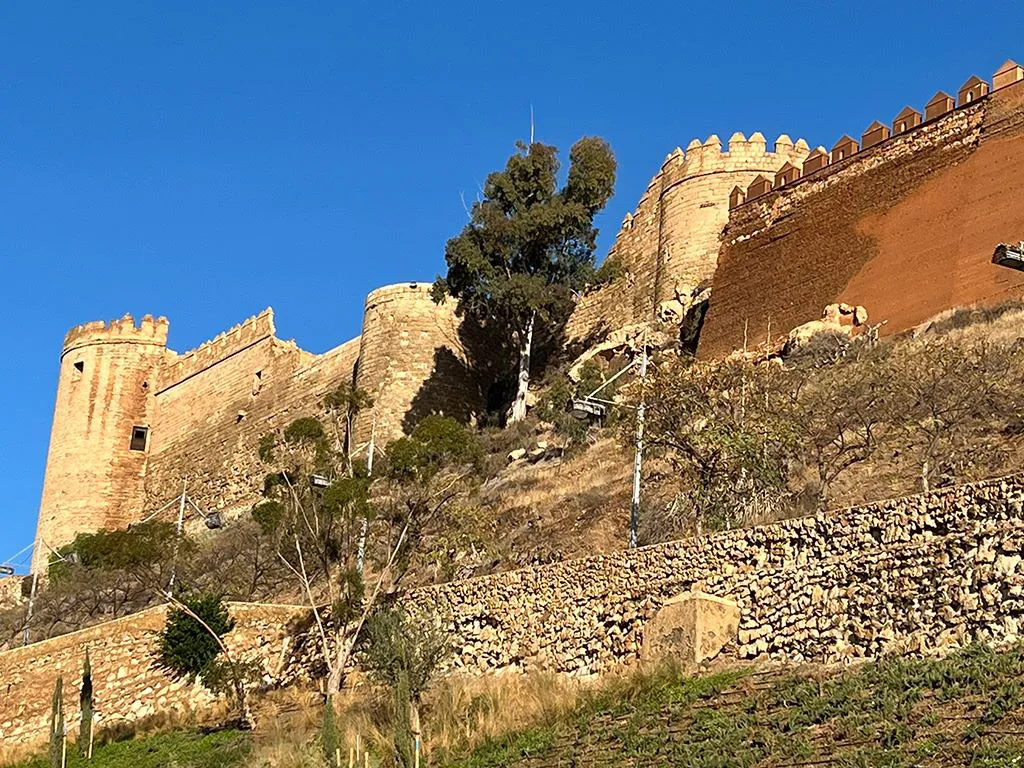
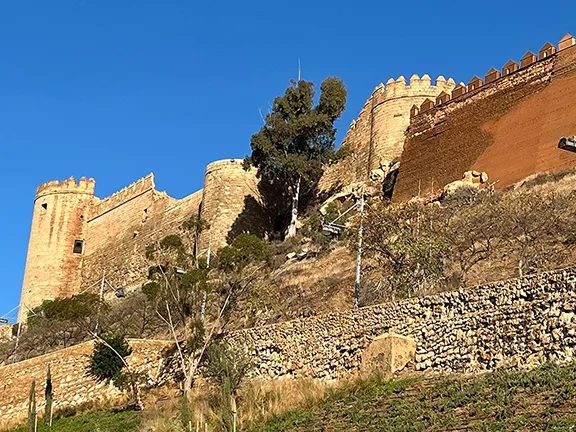
The Alcazaba of Almeria
One hundred and forty years after the Muslim conquest, in about 855 AD, the fourth Umayyad Emir of Córdoba, Abd ar-Rahman II, commissioned the defence of the coast of Almeria to two Yemenite tribes, the Gassan and the Ruayn who had occupied the area since 713 AD. Together with the sailors and merchants of al-Andalus, they created the Maritime Republic of Pechina with its capital at Bayyana, a few kilometres inland from Almeria city on the banks of the River Andarax.
In those days the Andarax was wider and deeper than it is today, and the Yemenis built a significant port on the river. By the 10th century, Bayyana was a walled town with a fortress and had its own navy to protect the coast from pirates and even take part in offensive operations against the Franks, Idrisids and Fatimids.
Grain, fruit, olive oil, gold, silver and, most importantly, silk, was exported from Bayyana and exotic spices and goods from the eastern Mediterranean arrived there to be traded throughout al-Andalus.
However, Bayyana had a problem; the Andarax was silting up, effectively moving the coast further south and making Bayyana less accessible to larger boats.
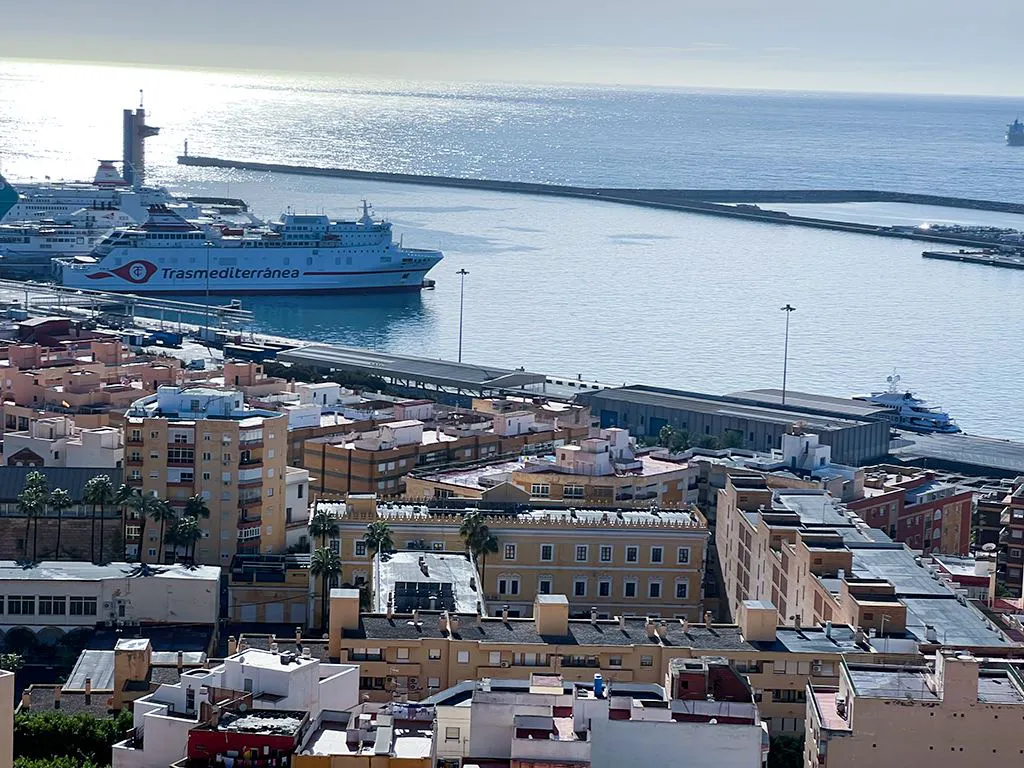
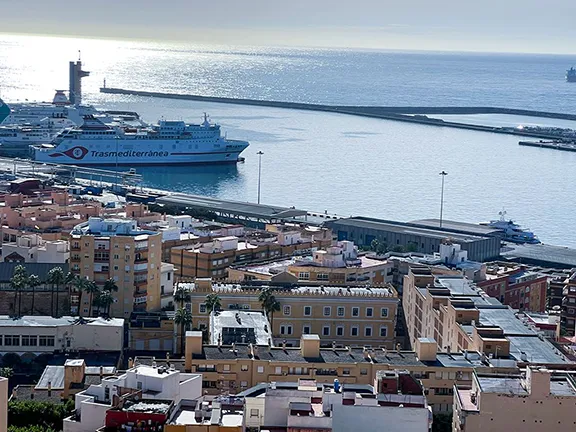
The modern port of Almeria
In the early years of the 10th century, Caliph Abderramán III, the last independent emir, had a defensive watchtower built on a hill at the entrance to the Rio Andarax. As Bayyana declined, the port of Almeria, beneath the watchtower, started to grow. Being closer to the sea and accessible by larger ships than Bayyana, it soon started to eclipse the more ancient port. The new port became known as Al-Mariyya Bayana, ‘The Mirror of Bayyana’.
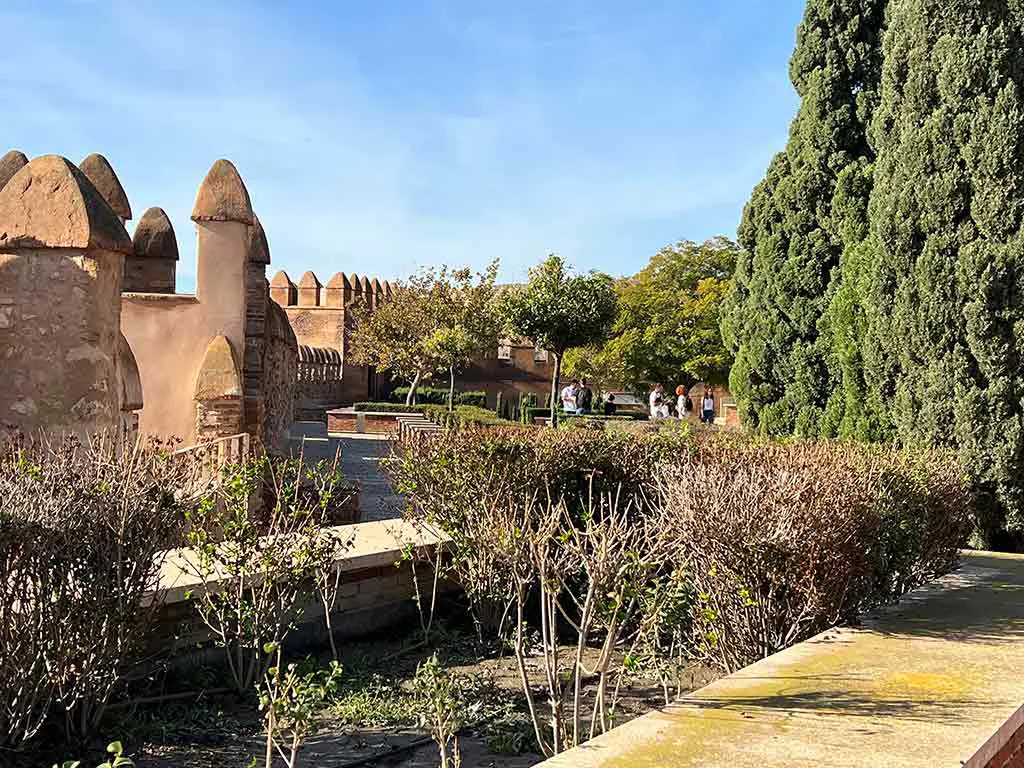
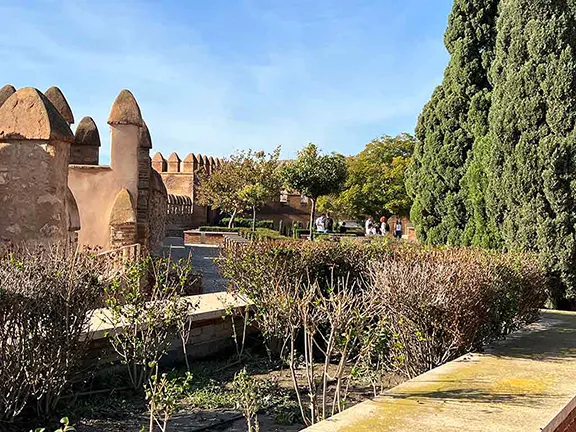
In 955 AD the first caliph of Al-Andalus, Abd al-Rahman III, gave Al-Mariyya Bayana the title of ‘medina’ or city, and work on the Alcazaba commenced.
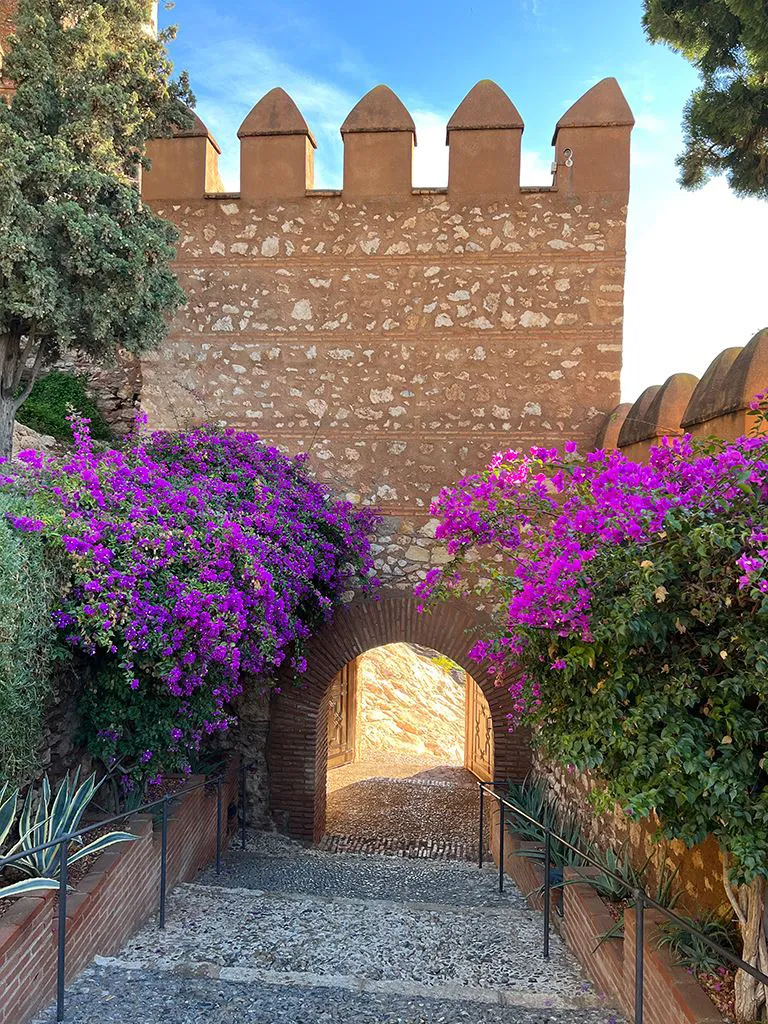
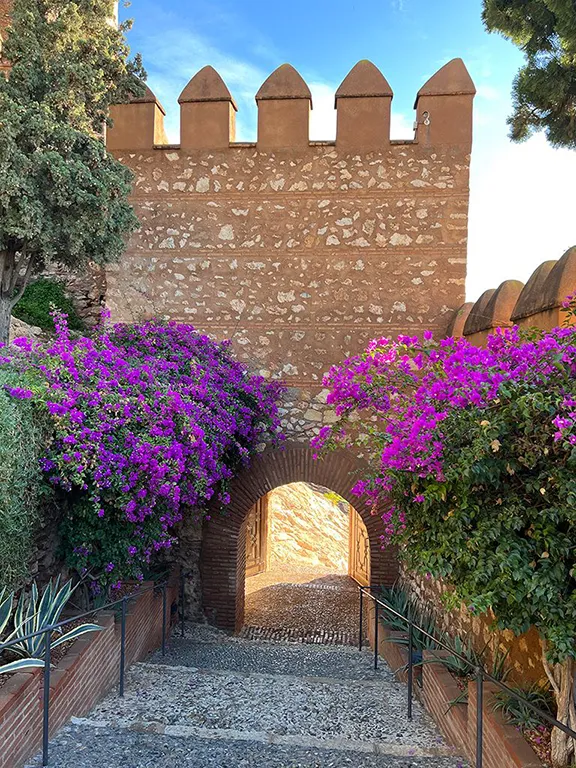
Puerta de la Justicia
Entry to the Alcazaba is through the Puerta de la Justicia in the southern wall. This takes you into the enclosure behind the first line of walls. Now a beautiful garden, when built, it was a military camp and used to shelter the civilian population of the town. The large cisterns or aljibes, are still there and are, incredibly, still waterproof after more than one thousand years.
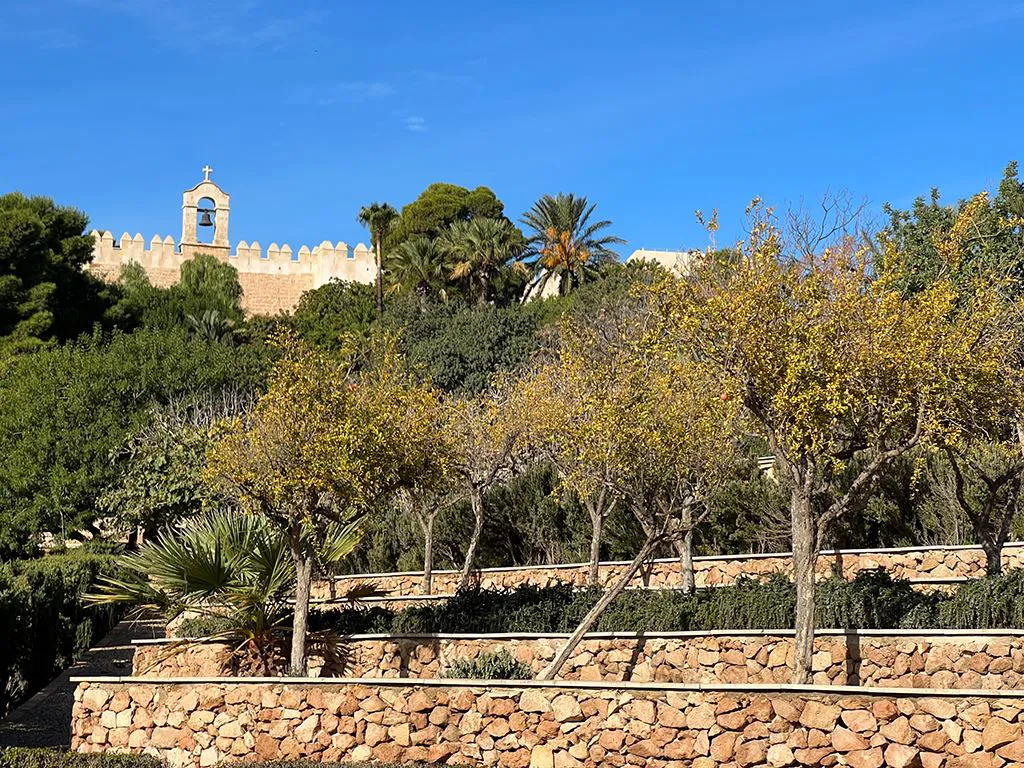
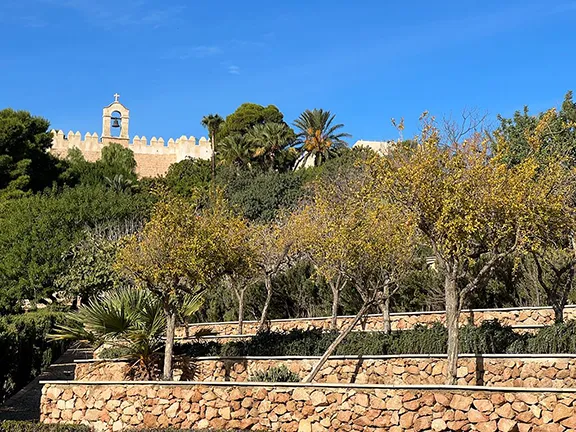
El Moro de la Vela
You then pass through the second wall called ‘El Moro de la Vela’ (‘Wall of the Sail’), into the second enclosure. The wall gets its name from the bell, centrally placed on the top of the wall, that was rung in the event of pirates being sighted or any danger to the port, to warn the populace to take shelter in the Alcazaba.
In the second enclosure was the residence for the governors, their soldiers and their servants. It also included a mosque, baths, another set of aljibes and storerooms.
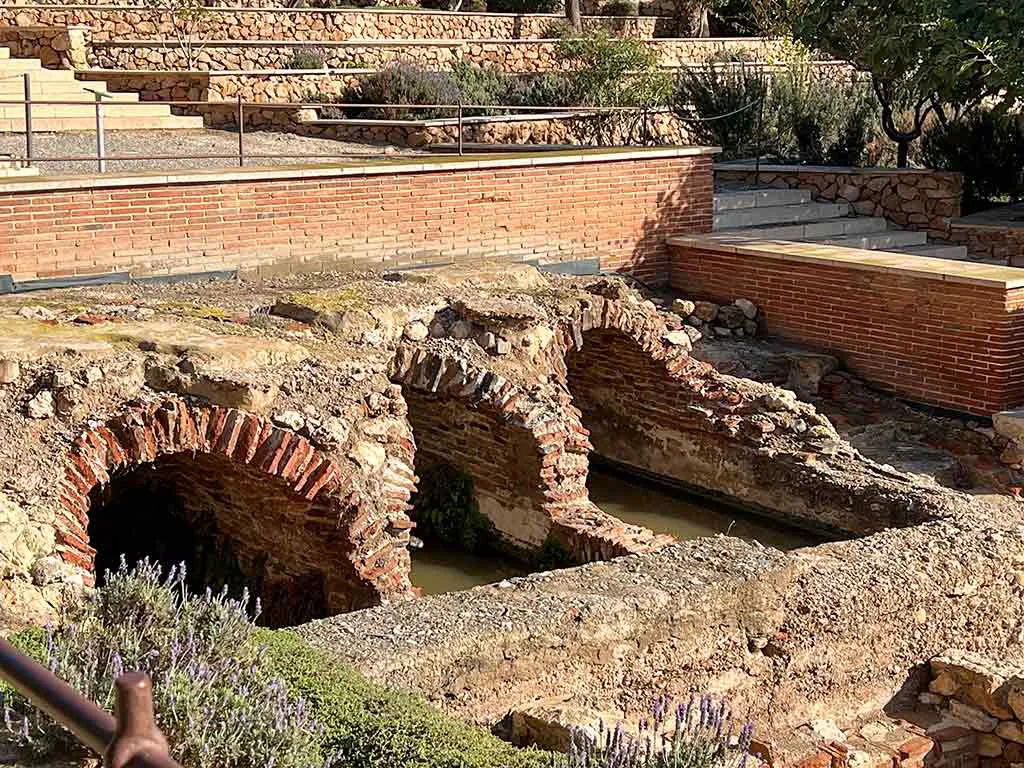
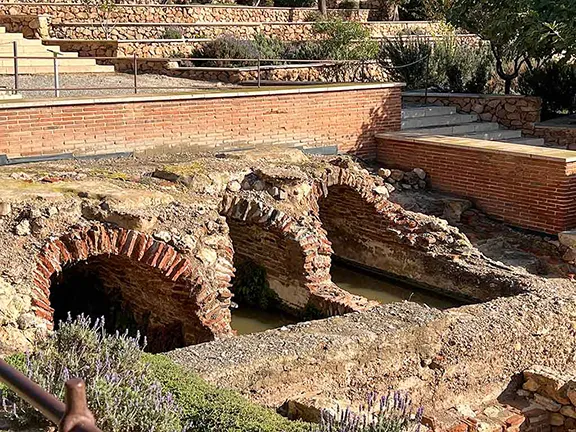
Aljibes in the first enclosure
The most prominent and elaborate building in the second enclosure would have been the Almotacin Palace.
Abu Yahya Muhámmad bin Ma'n bin Sumádih al-Tuyyibi, known as Almotacin, was King of the Taifa of Almeria from 1051 until 1055.
The prosperity of the city during his reign was based on the silk trade, with the city having more than 10,000 looms. In the city there were shipyards, mosaic factories, foundries and metal working shops in which copper objects were manufactured, potteries, salt factories and a fruit preserving industry whose products would reach Tunisia and Egypt. During his reign, the city of Almería became one of the most important economic and cultural centers of Al-Andalus, and its main commercial port.
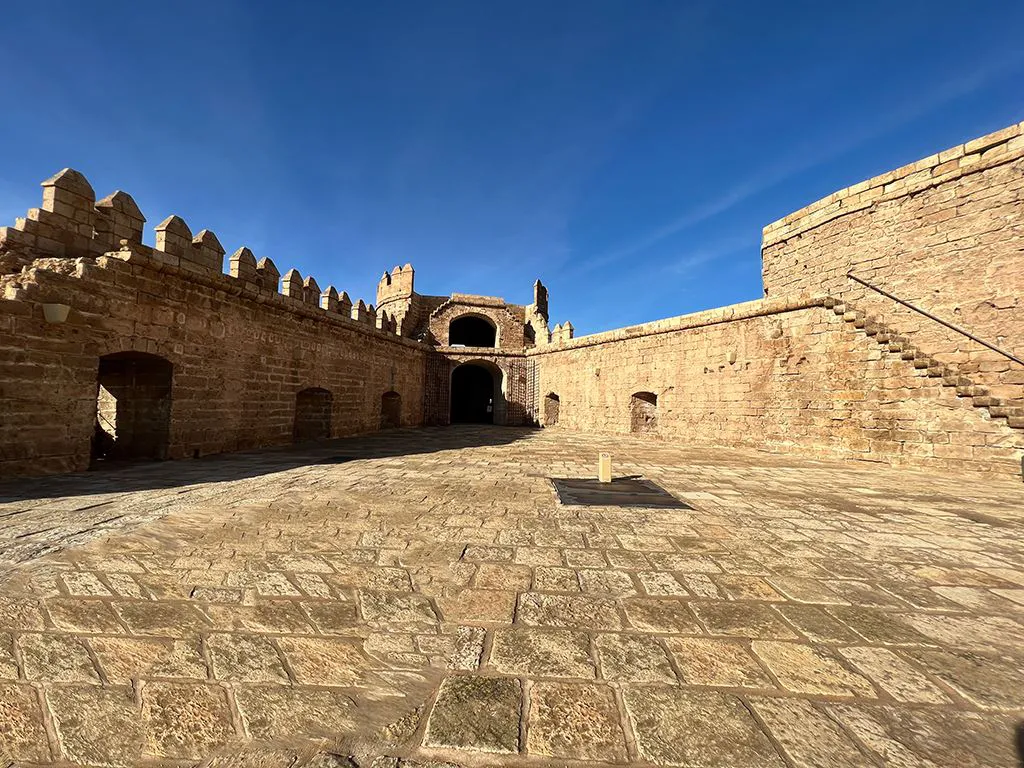
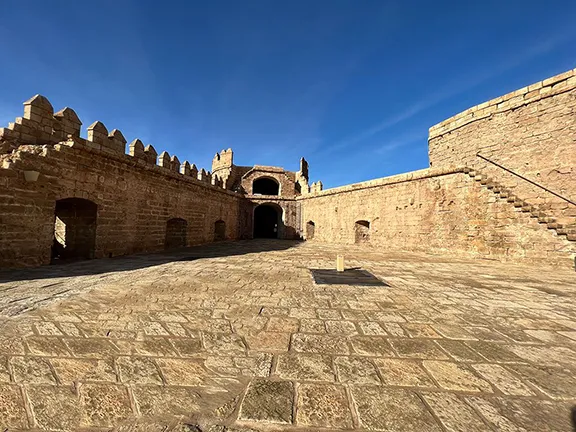
Fortifications ordered by the Catholic Monarchs
Passing through another, more substantial wall, you enter the Patio de Armas with three towers, the Torre del Homenaje, the Torre de la Noria del Viento and Torre de la Polvora connected by massive battlements. This part of the Alcazaba was built after the final reconquest of Almeria by the Catholic monarchs Isabella I of Castile and Ferdinand II of Aragon and was constructed to withstand bombardment by gunpowder charged cannon.
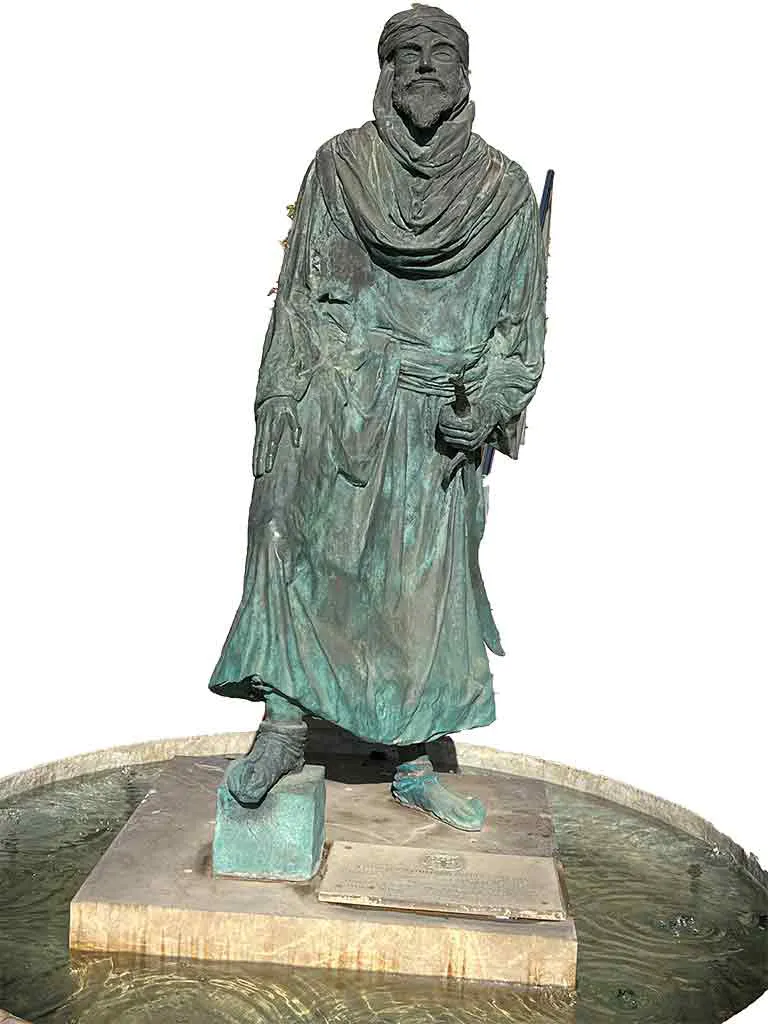
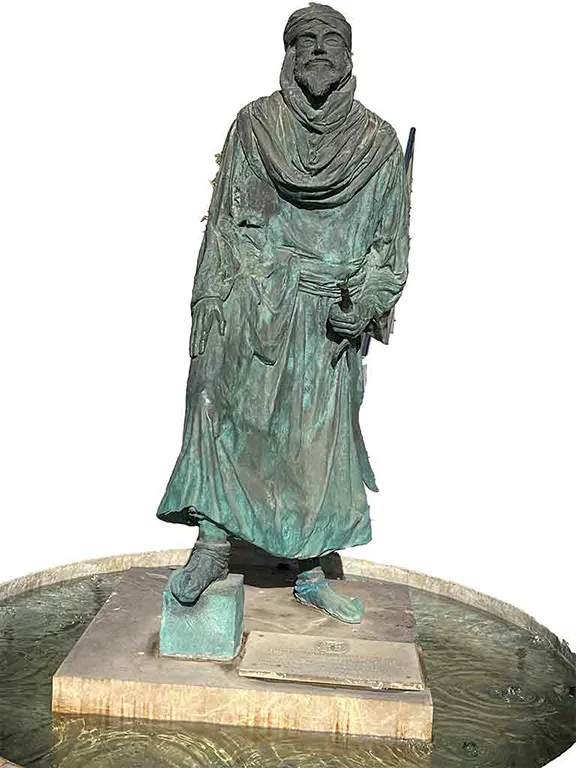
King Jairán, the first king of the Taifa of Almeria
Projecting out from the northeast wall is the Muralla de Jairán. This defensive wall crosses the Barranco de la Hoya and climbs San Cristobal Hill. It was built during the 11th century by King Jairán, the first king of the Taifa of Almeria, and formed part of the defensive walls surrounding the town.
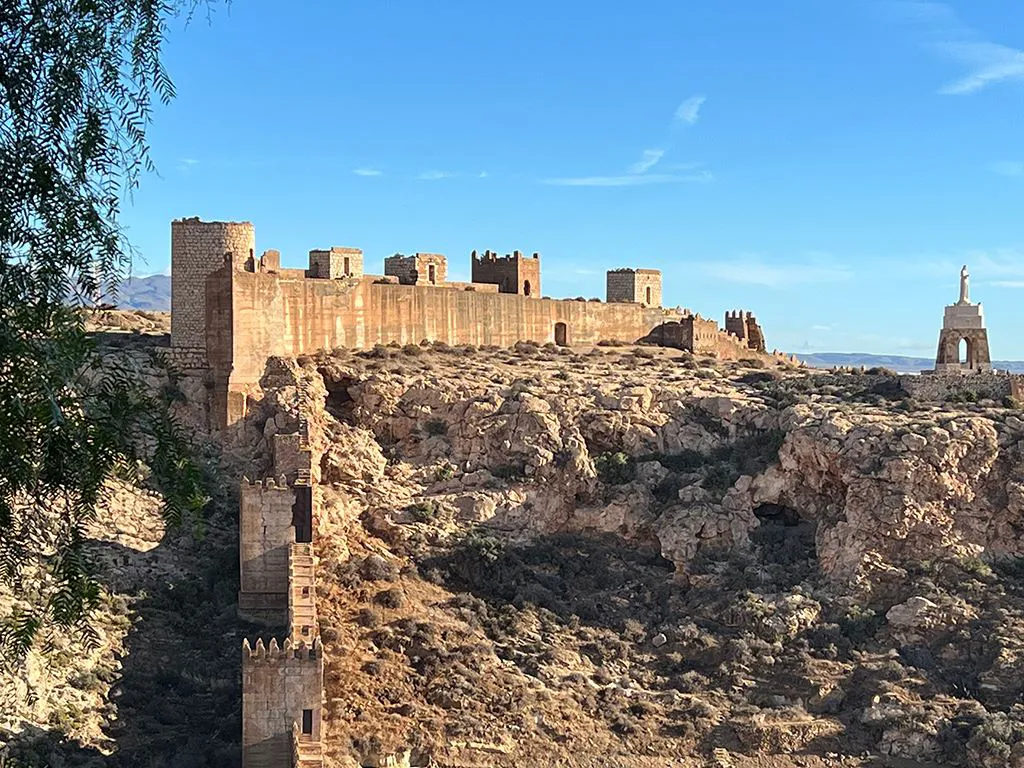
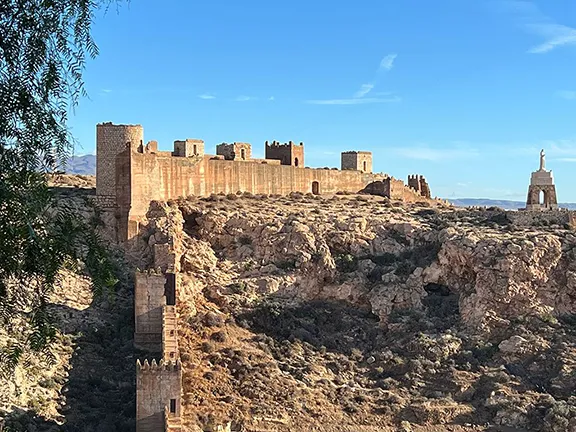
The Muralla de Jairán and Sacred Heart of Jesus
On the hill, known in Muslim times as Monte Laham, there are seven towers, three square Muslim towers and four semi-circular Christian towers. The latter were built by the Templars of Alfonso VII following the Christian conquest of the city under the command of the troops of Alfonso VII in 1147. The Templars also constructed a fortified chapel.
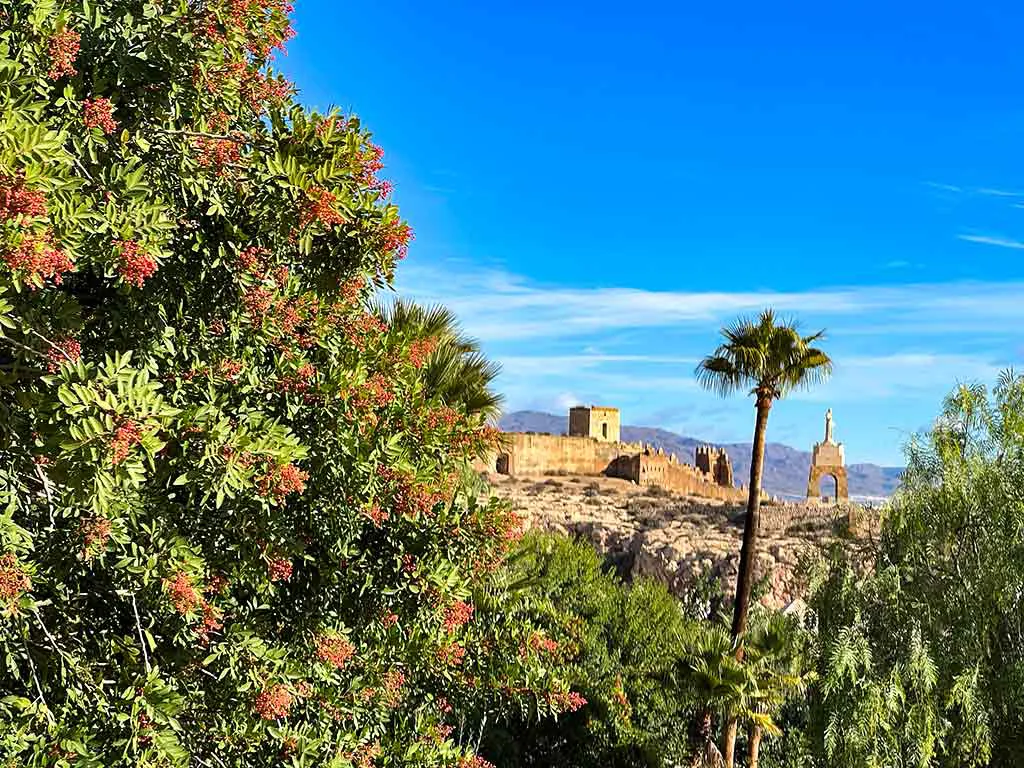

Monte Laham
On this hill, which has an impressive view of the city, and located on a large pedestal, is the image of the Sacred Heart of Jesus, constructed of local Macael marble. It was restored in 2000 and it is said to bless the city and the Mediterranean Sea. It was originally built in the twentieth century (around 1930).